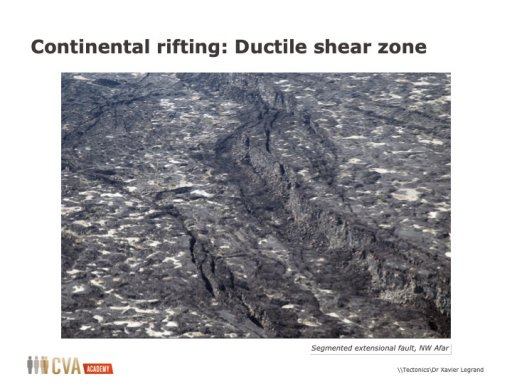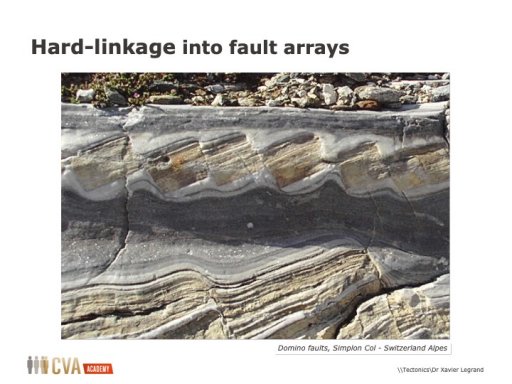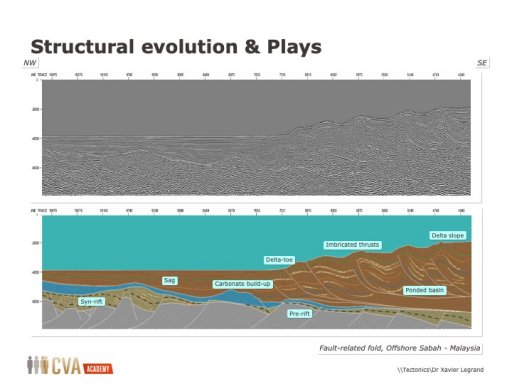Structural Geology in Oil and Gas Industry
- Course Type
Classroom Course - Duration
5 days - Thematic
Geosciences - Location
- Country
ANYWHERE -
Satisfaction rate
Why should you attend?
The era of easy oil is over and E&P in a complex structural environment and/or a frontier area faces data errors and therefore uncertainty in the decision process. This 5-day course is specially designed to give the essence of the tectonics and the structural geology needed for E&P workin such environments. At the end of this course, you will be able to apply in your daily work what you have learned in order to achieve greater technical and commercial success for your company.
Main objectives:
This course aims to deliver the best practices of the Structural Geology in Oil and Gas industry. The real cases studied have been selected for their high technical and commercial added value. In addition, it addresses the following questions:
What is the role of the structural geology in E&P?
Why is it important in oil & gas business?
Where does the discipline fall in the oil and gas process flow?
Who are the structural geology stakeholders?
Learning approach:
This service-oriented approach is illustrated by the best representative studies of real cases from multiple structural styles and tectonic environments. This interactive formula of knowledge transfer and practice keeps the attendee focused on the objectives. Sorted-out candidate projects led to 100’s M$ of potential value creation.
HSE requirements:
No specific requirement for this course which can take place in any meeting room with validated HSE characteristics, in your company premises or elsewhere.
Course agenda:
This initial 5-days course can be adapted according to a specific request.
Day 1: Introduction and Basics
- The importance of structural geology since the breakthrough of anticline theory and its concept of “Where to drill” in 1883;
- The first issue in structural interpretation and risk analysis is the conceptual uncertainty;
- The use of analog from the field to the laboratory model;
- The scale issue as an advantage as long as the deformation is considered fractal;
- The deformation markers and their uses in structural analysis and seismic interpretation.
This is illustrated by 4 sets including, quiz (1) structural-based interpretations using seismic lines, offshore (2) and a geological map, onshore (1).
Day 2: The global dynamics
- Plate tectonics as driving forces in petroleum systems;
- The different tectonic setting of lithospheric plates;
- The role of the focal mechanism too often neglected;
- Nothing is possible without isostasy.
This is illustrated by 3 animations and by 3 sets including, divergent regime (1), convergent regime (1) and transform regime (1).
Day 3: Folds and Faults
- Morphology and terminology of folds and faults;
- Faulting and fold interferences;
- Fault and fold expressions in seismic;
- Fault-related folds.
This is illustrated by 2 sets comprising the fault-layer relations (1) and the structural interpretation of interference folds (1).
Day 4: The kinematic restoration
- The principle and the method;
- A geometric-based solution;
- A geomechanics-based solution;
- To constrain the petroleum system modelling.
This is illustrated by 6 sets including the fault-related folds (3), the tri-shear method (1), the rigid body method (1) and the inclined shear method (1).
Day 5: The Play-Based Exploration (PBE) in Structural Geology
- The petroleum system logic as guideline;
- At the basin scale: the global tectonics and the structural evolution analysis;
- At the play scale: the play mapping, the trap fairway, the delineation and the trap identification and its evaluation;
- At the prospect scale: from reservoirs evaluation to seal evaluation.
This is illustrated by 2 sets including a seismic interpretation in tectonic inversion regime (1), and a structural analysis of a basin in the Peninsula Malaysia (1).
Prerequisites
This course is designed for young as well as more experienced geological and geophysical professionals who wish to acquire an integrated approach to the various interactive stages of structural geology in the petroleum system assessment process. An initial experience of seismic interpretation, albeit limited, would be necessary.
Lecturers
-
 Dr. LEGRAND X.Holds a PhD in Earth Sciences from the University of Toulouse (1990) and a Master's degree in Computer Sciences from the Institute National Polytechnique of Toulouse (1993). More than 30 years of worldwide experience in Oil & Gas with a special focus on Africa, North and South America, Middle and Far East and East Europe. He has in-depth knowledge of tectonics and deformation and the application of structural geology for added value at basin- to reservoir-scale. He leads and provides advice fully integrated with the essential processes of petroleum system analysis, play fairway definition and prospect risk and resource estimations in line with Play-Based Exploration (PBE) and with Exploration Management System (EMS). At the forefront of new technology developments to innovate in the analysis and interpretation of big data for Geosciences, he is accountable as well for applied teaching, learning and assessment methods for transferring know-how in the realm of the tectonics and structural geology.
Dr. LEGRAND X.Holds a PhD in Earth Sciences from the University of Toulouse (1990) and a Master's degree in Computer Sciences from the Institute National Polytechnique of Toulouse (1993). More than 30 years of worldwide experience in Oil & Gas with a special focus on Africa, North and South America, Middle and Far East and East Europe. He has in-depth knowledge of tectonics and deformation and the application of structural geology for added value at basin- to reservoir-scale. He leads and provides advice fully integrated with the essential processes of petroleum system analysis, play fairway definition and prospect risk and resource estimations in line with Play-Based Exploration (PBE) and with Exploration Management System (EMS). At the forefront of new technology developments to innovate in the analysis and interpretation of big data for Geosciences, he is accountable as well for applied teaching, learning and assessment methods for transferring know-how in the realm of the tectonics and structural geology.








